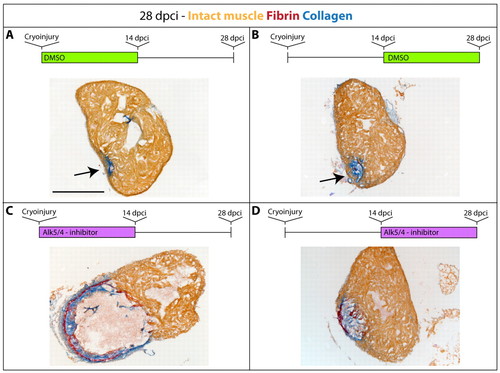Fig. 5
- ID
- ZDB-FIG-120601-17
- Publication
- Chablais et al., 2012 - The regenerative capacity of the zebrafish heart is dependent on TGF? signaling
- Other Figures
- All Figure Page
- Back to All Figure Page
|
Transient scar formation is an essential reparative step toward heart regeneration. AFOG staining of zebrafish hearts at 28 dpci after a transient drug treatment during the initial 14 days (A,C) or the final 14 days (B,D) of the experiment. (A,B) Control (DMSO-treated) hearts display normal regeneration. Only a small area contains collagen fibers (arrow). (C) Inhibition of Alk5/4 during the initial phase of scar formation is deleterious, resulting in a complete lack of regeneration. Despite the subsequent 14 days of normal conditions, the post-infarct developed an inflated infarct phenotype. (D) Inhibition of Alk5/4 starting at 14 dpci, after the time needed for scar deposition, does not cause architectural deformations of the post-infarct. The injury site contains collagen, but scar replacement with cardiac tissue appears to be impaired in comparison to control (B). Scale bar: 300 μm. |

